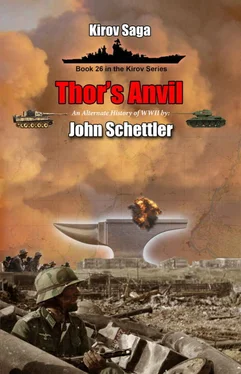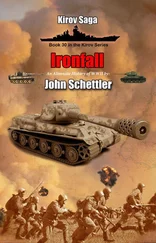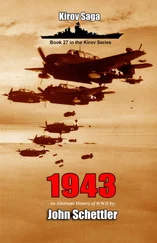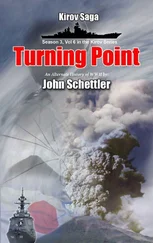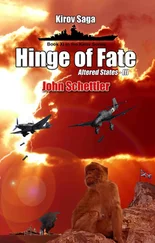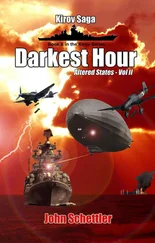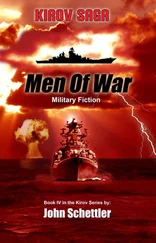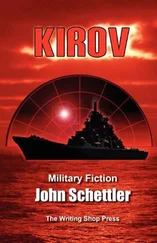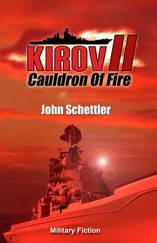Then there were the British, who had a division at Perth to use if they should want to strike at the barrier islands again. That was why he decided to send Harada and his ship into the Indian Ocean. If Hara’s carriers could defeat the British squadron, and occupy Ceylon, any threat from the British would be completely neutralized. And then, there was always the possibility that the Americans might use their base at Hawaii to strike directly into the Marshalls, or attempt to retake Wake Island. From those bases they could attack the Marianas, and such a strategy would completely bypass the Solomons, New Hebrides and New Guinea. That was what they actually did in those books the Admiral reviewed. And then there was the problem on Karafuto Island, where the Siberians had been stopped by the Japanese 7th Division, but still represented a serious danger.
So many threats, from so many directions, and the defense rested primarily with the navy. At first glance, it seemed that all the dramatic gains achieved in 1942 were war winners, but Yamamoto knew that even his face cards could be taken by the enemy trump cards. Yet ‘life was not a matter of holding good cards,’ said Robert Louis Stevenson, ‘but of playing a poor hand well.’ Yamamoto was considering how to play out the hand he now held to win this game, and it was time to lead. He wanted no shadow over his shoulder when he finally turned to face the Americans again.
* * *
In the high summer of 1942, Great Britain, which had stood alone in the west since the fall of France, at last had a powerful Ally in the United States. In spite of that, the British Empire still remained under grave threat, and Churchill could see shadows everywhere he looked. The German Occupation of Norway, with their new major base at Nordstern, was a constant threat to the northern seas, and served to sever the line of communications to Soviet Russia at Murmansk. The U-Boat threat was at its height, making cross Atlantic communications with the US precarious. Britain’s Pacific holdings, chiefly Hong Kong and Singapore, had been smashed and occupied by Japan, and now the Japanese were in Burma.
In this light, the British occupation of Madagascar, taken from the French in May of 1942 in this history, and its strong presence on Ceylon at Colombo were now the two bastions of power aimed at securing lines of communications through the Indian Ocean and Bay of Bengal. Those lines reached out to Australia and New Zealand, and had once linked India with the Empire’s Pacific holdings before the war. Now they served commercial shipping to ports like Madras, Calcutta and Bombay, where the Jewel of Britain’s occidental empire, India, was slowly coming under increasing threat from the Japanese.
The brief but violent British assault on French held Madagascar had taken place right on schedule, between the 5th and 7th of May. As such, it was eclipsed by the far larger battle off Fiji then underway, and the decisive collision in the Koro Sea. Yet for the British, seizing Madagascar was of great significance. It was one of two vital possessions Vichy France held that the Allies dearly coveted, the other being the New Hebrides.
“We already know what the French have suggested,” said Churchill to Brooke when the matter had come up. “They’ll go so far as to hand the entire island right over to the Japanese. Then what? From there they will have cut us off from Ceylon and India, and if they take that naval base, they can put bombers on Durban, and stop every last convoy we send around the Cape. It would be a disaster of the first order, so that place simply must be taken. I don’t care how we do it, or where the troops come from. You must find them, and carry it off like a thief in the night before the Japanese realize what they’ve lost.”
Brooke handed the matter to Tovey for the naval arm, and he teed up Illustrious and Indomitable with 82 planes to cover the operation. He then scraped up the 29th Independent Brigade, the 13th and 17th Brigades of 5th Division, the 7th South African and Rhodesian 27th Brigades. Number 5 Commando would be on the cutting edge of the attack. This was a force of some 15,000 troops against the French garrison of 8,000 troops and six tanks, with 32 antiquated planes.
The landings had occurred at the northernmost tip of the island where the vital protective Diego Suarez Bay provided one of the best anchorages in the Indian Ocean. The 29th Brigade was the hammer that struck that anvil, with the other British forces following later. The action in the north was a great success, and though low level fighting continued for the next 45 days, Churchill had Madagascar, and saw it as a great outer bulwark protecting the vital Cape Town region.
When ULTRA intercepts indicated that the enemy was now planning a sortie into the Indian Ocean, it was therefore cause for some alarm in Whitehall. It was clear what their objective might be—Ceylon. If japan were to take that, they could use it to base aircraft, naval units and submarines that could pose a threat as far away as the Persian Gulf and Red Sea. Beyond that, Ceylon was also a source of over 90% of Britain’s rubber, and it would produce 60% of the rubber all the Allied powers used, a resource that was much needed in wartime. All those tires on trucks and planes needed it, and it had many other wartime applications. Ceylon was also a major producer of tea, and that, too was a vital resource insofar as the British were concerned.
Yet for all that virtue, Ceylon’s liability was that it could not produce enough food to feed its local population. As Hara’s carriers headed west, there was no more than 14 days supply of rice on the Island, and the island needed to import over half a million tons of rice per year. Some of it came from India, more from the Middle East, and that meant the waters around the island were full of merchant shipping on those thin, highly vulnerable sea lanes. The Japanese knew this, and therefore one of Vice Admiral Ozawa’s chief objectives, in addition to screening Hara’s carriers, was to seek out and destroy merchant shipping off the coast of India.
And so just one brief look at a single piece of the great puzzle that had been the British Empire, was quite revealing. This piece was particularly important, for it connected directly to great segments of the puzzle on either side, the Australian and New Zealand Commonwealth to the east, and India to the north. Remove it from British control, and a deadly gap appeared in the puzzle that could only be filled again by fire, steel, and blood. In many ways, it was more strategic then Malta was in the Med, or even Gibraltar, and perhaps even the equal of the Suez Canal in terms of importance to that theater. Churchill himself commented that the approach of Japanese naval units to Ceylon filled him with dread.
“The most dangerous moment of the War, and the one which caused me the greatest alarm, was when the Japanese Fleet was heading for Ceylon and the naval base there. The capture of Ceylon, the consequent control of the Indian Ocean, and the possibility at the same time of a German conquest of Egypt would have closed the ring and the future would have been black.”
British power to protect and secure the vital resources and lines of communication flowing through Ceylon now rested on Somerville’s Indian Ocean Squadron, three carriers, three old battleships, three heavy cruisers and a few other light cruisers and destroyers. After watching the Japanese destroy Pearl Harbor, seize the Philippines, Malaya, Singapore, the Dutch East Indies, New Guinea, push boldly into the Solomons and all the way to Fiji, Churchill had every reason to be fearful with the coming of this news.
In early July, he had very little to defend that island. He had pleaded with Prime Minister Curtin to allow him to keep two regiments of the Australian 6th Division there, but the loss of Port Moresby and the brief Japanese air raid on Port Darwin had ended any hope of achieving that. So it was then down to the British 34th Indian Division, reinforced earlier that year with the arrival of the 16th British Regiment, and the HQ and 21st Regiment of the 11th East African Division. A few security battalions had been raised among the locals, but that was it, with service troops in the two major ports, some AA guns and radar crews.
Читать дальше
